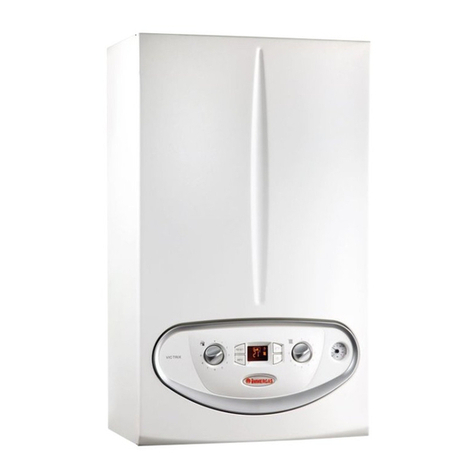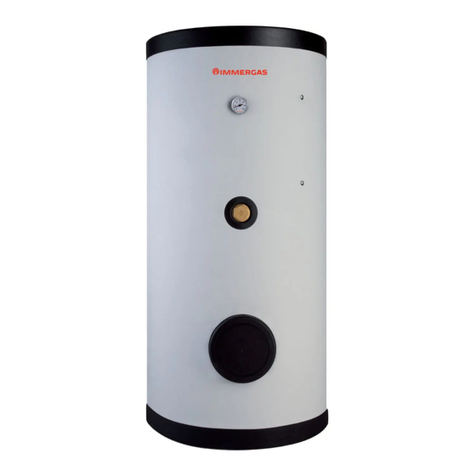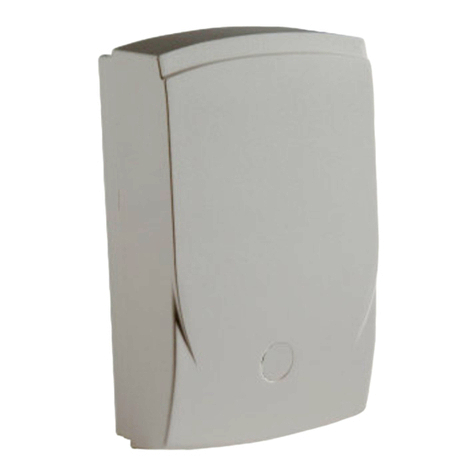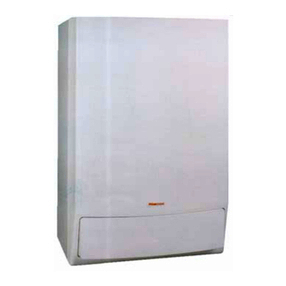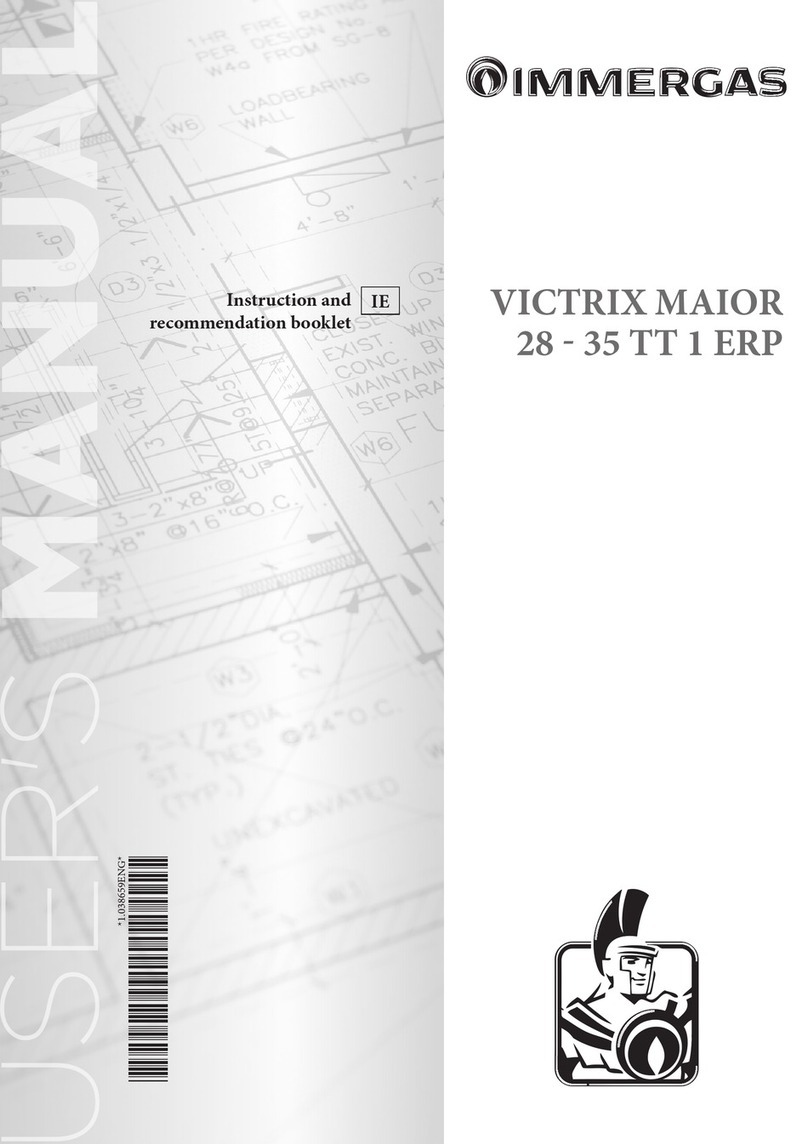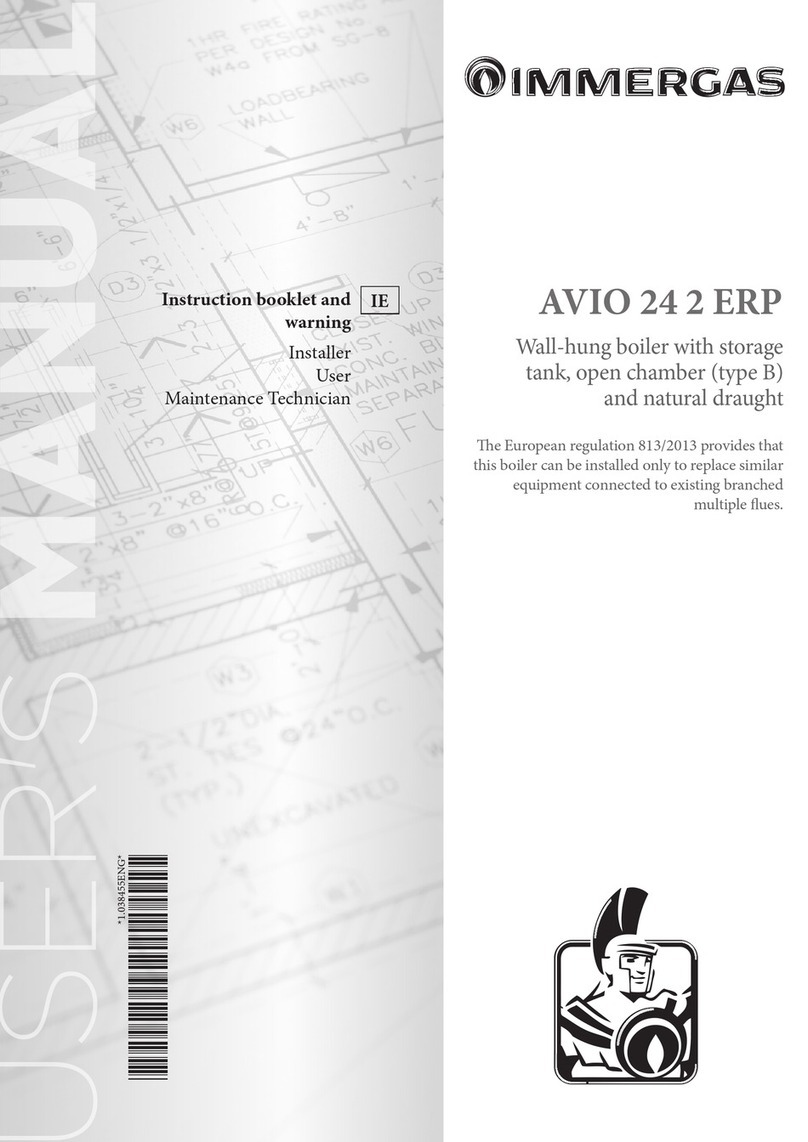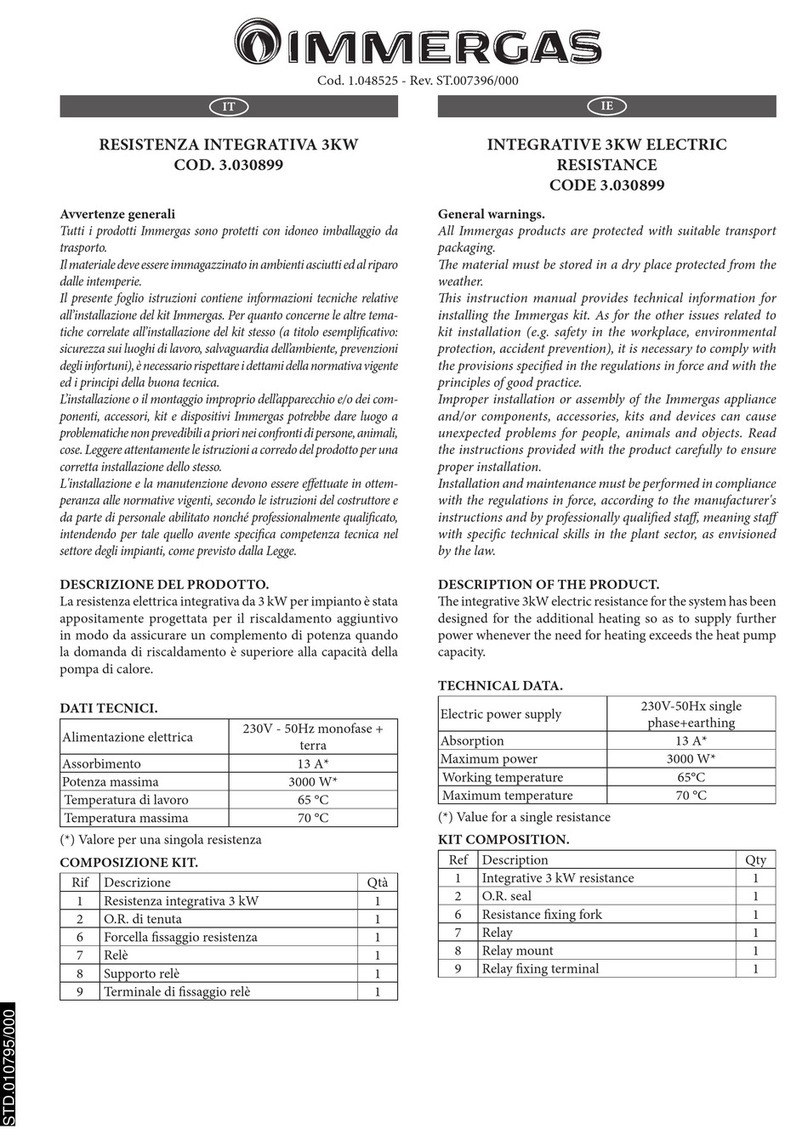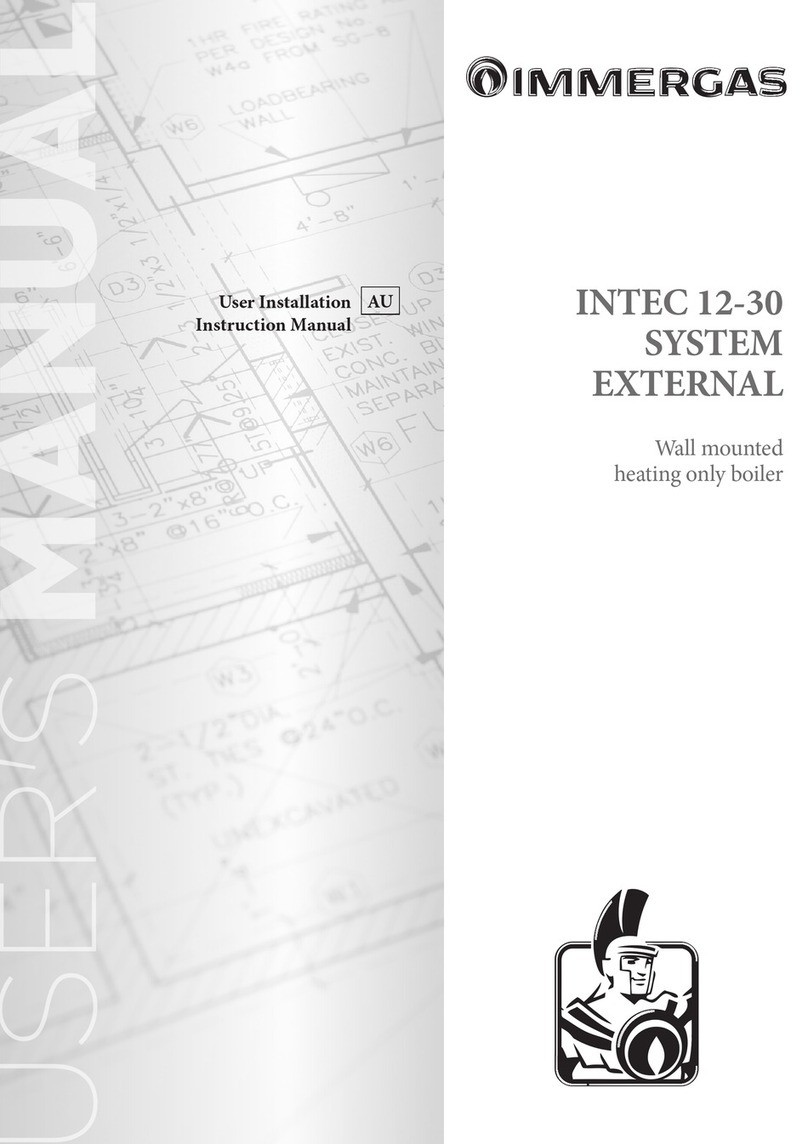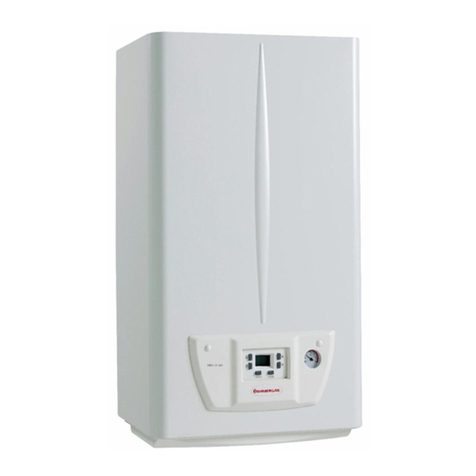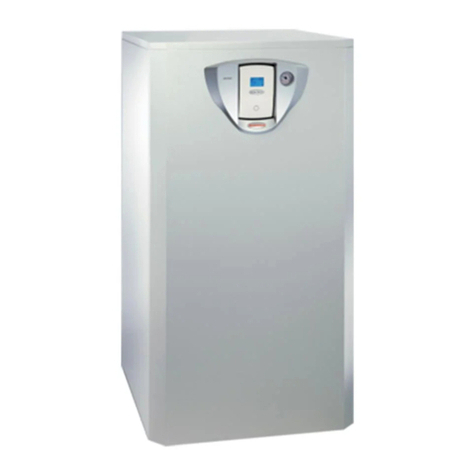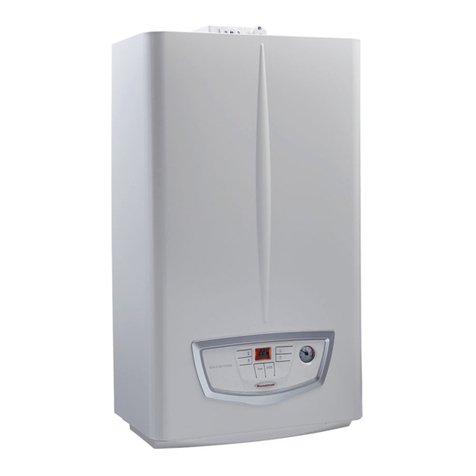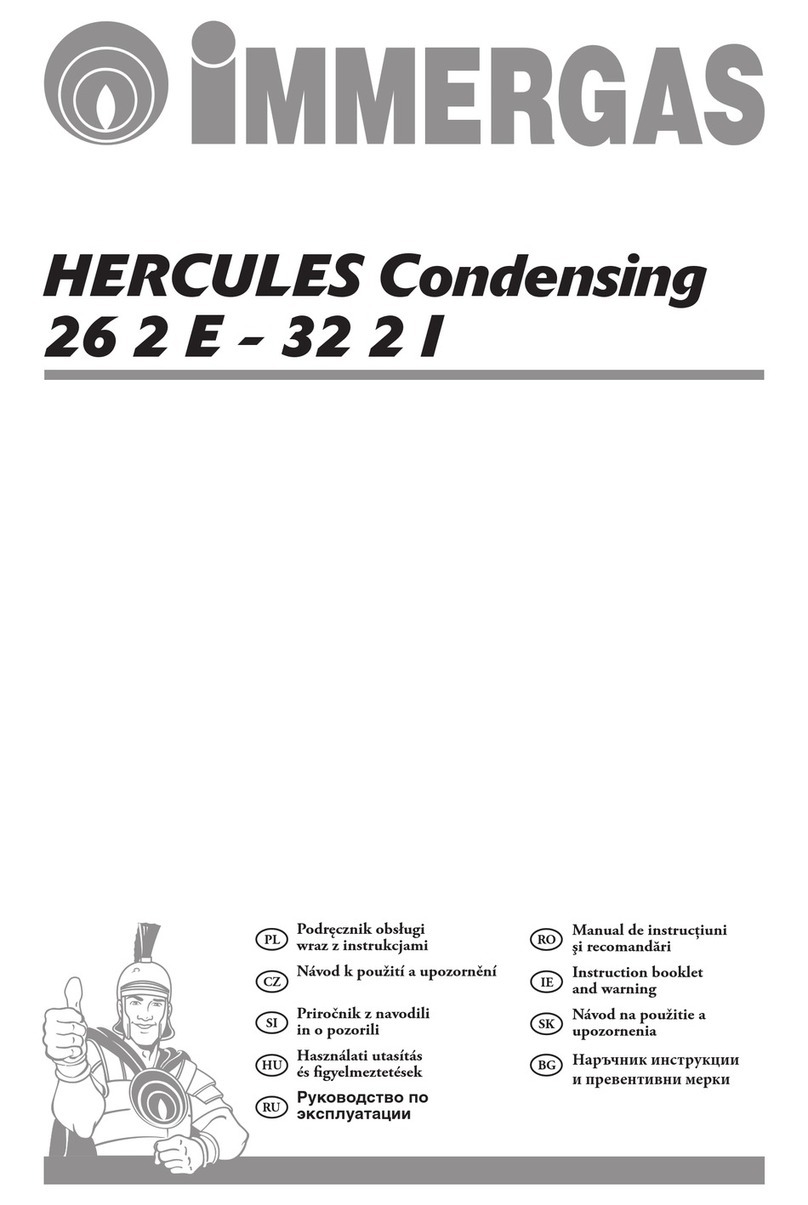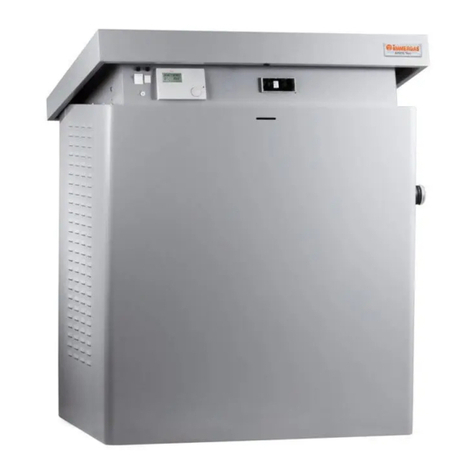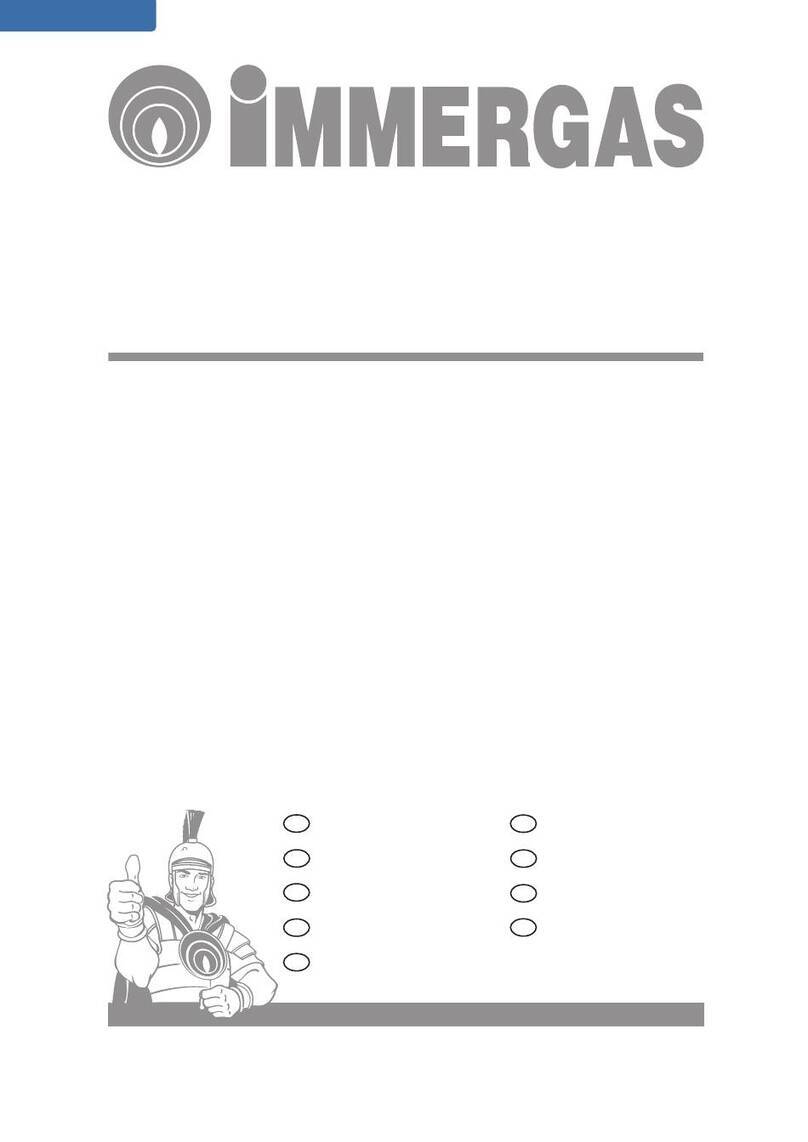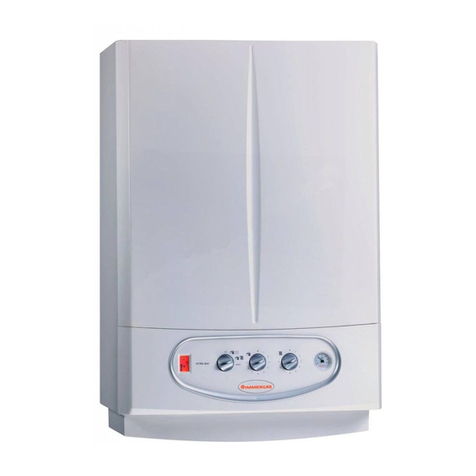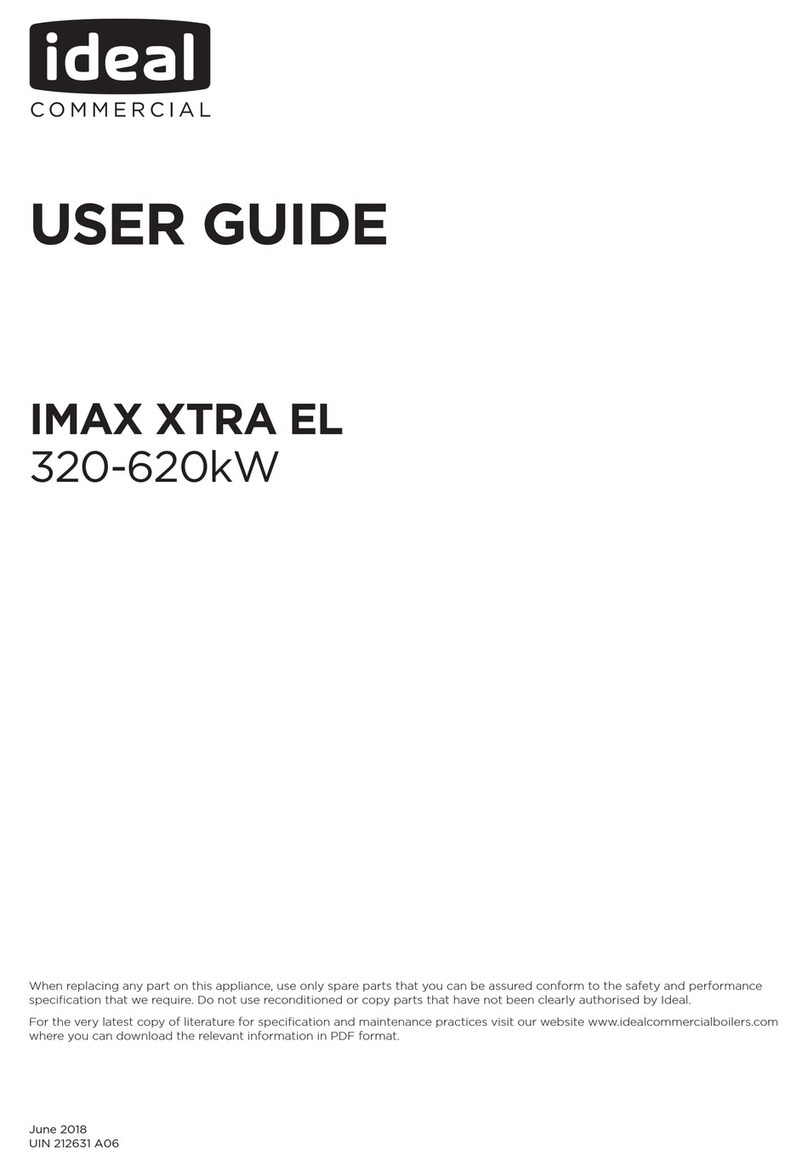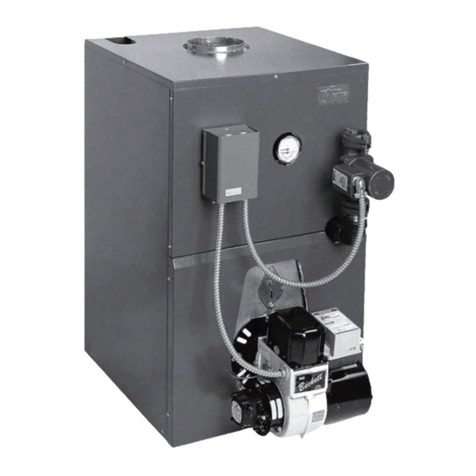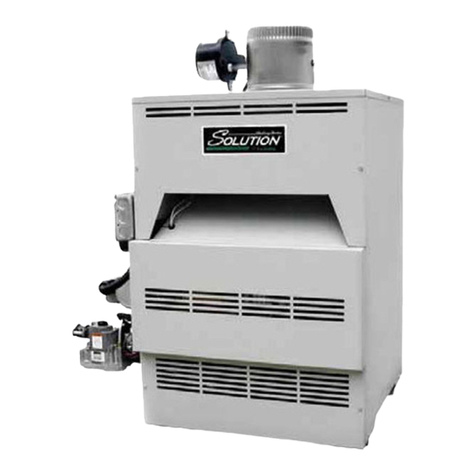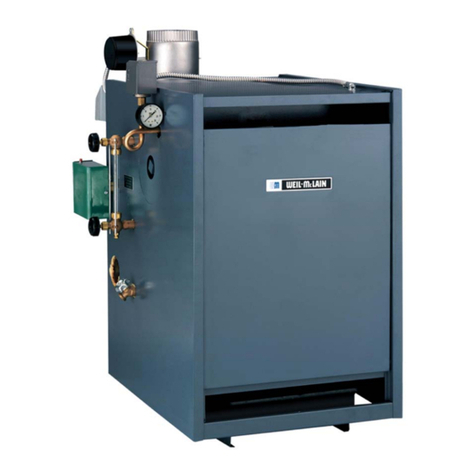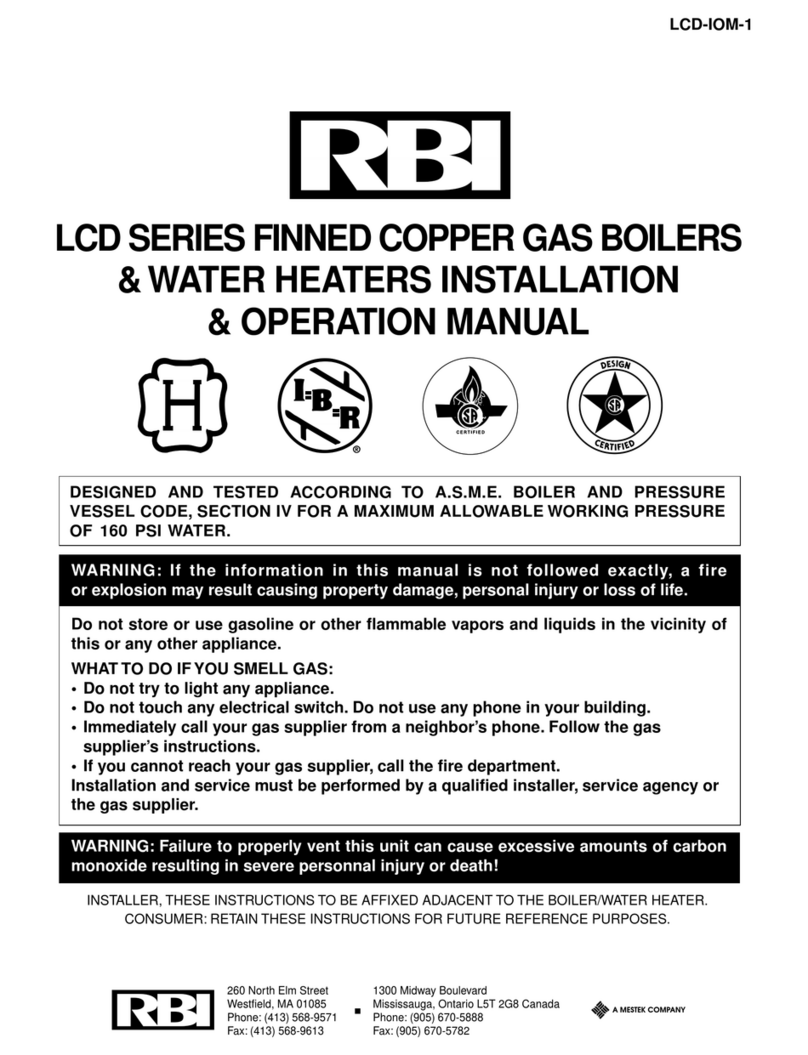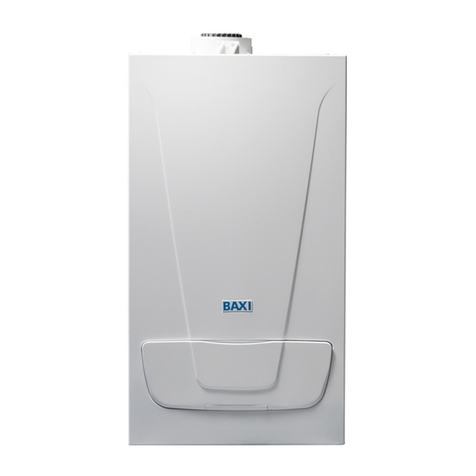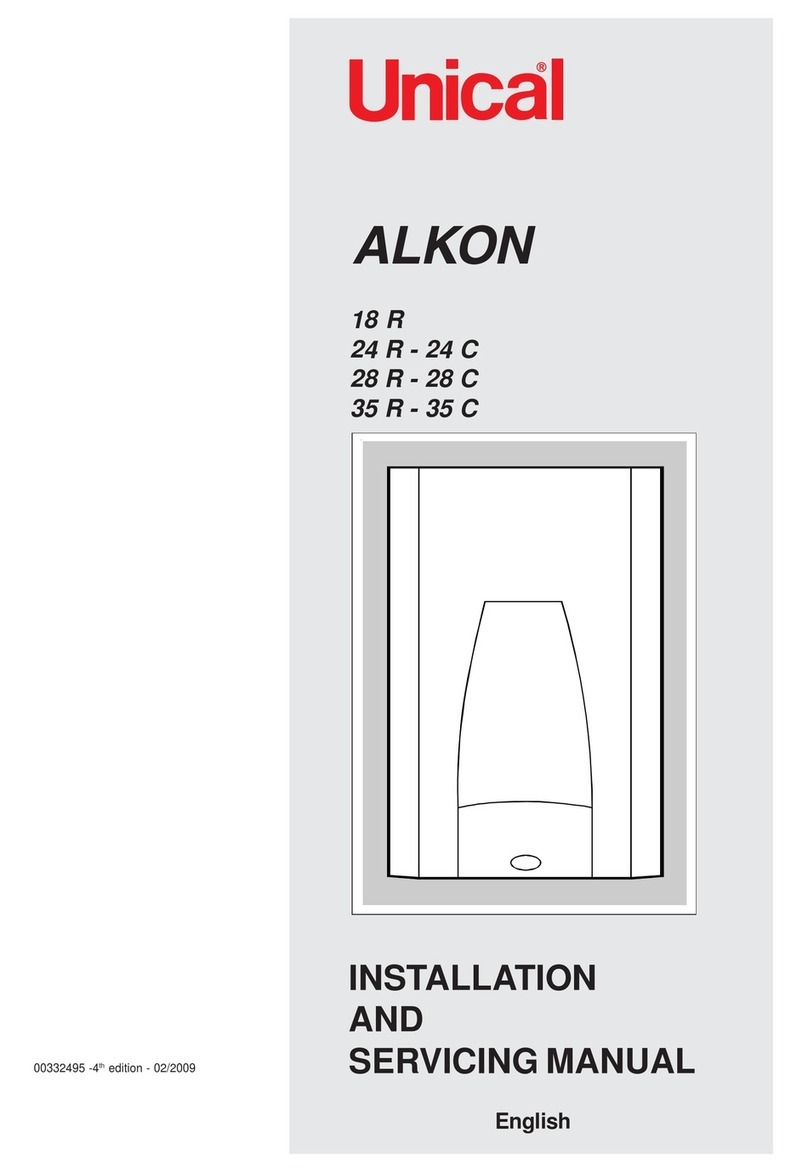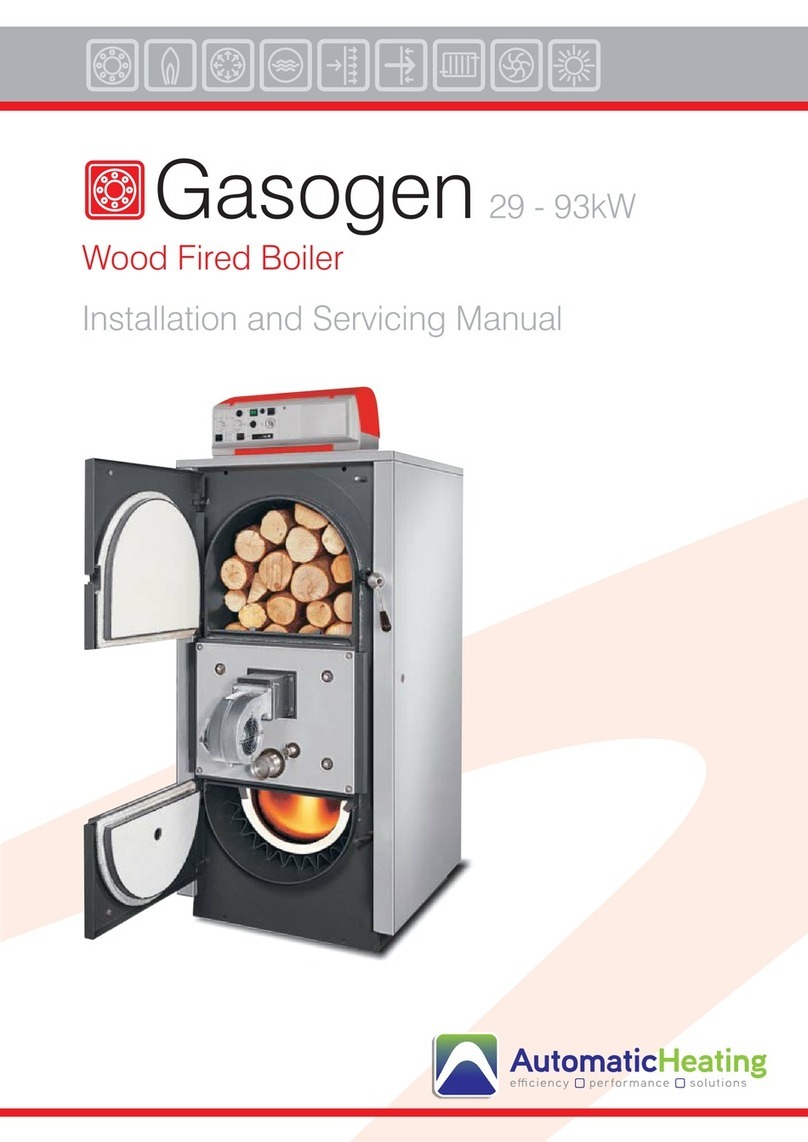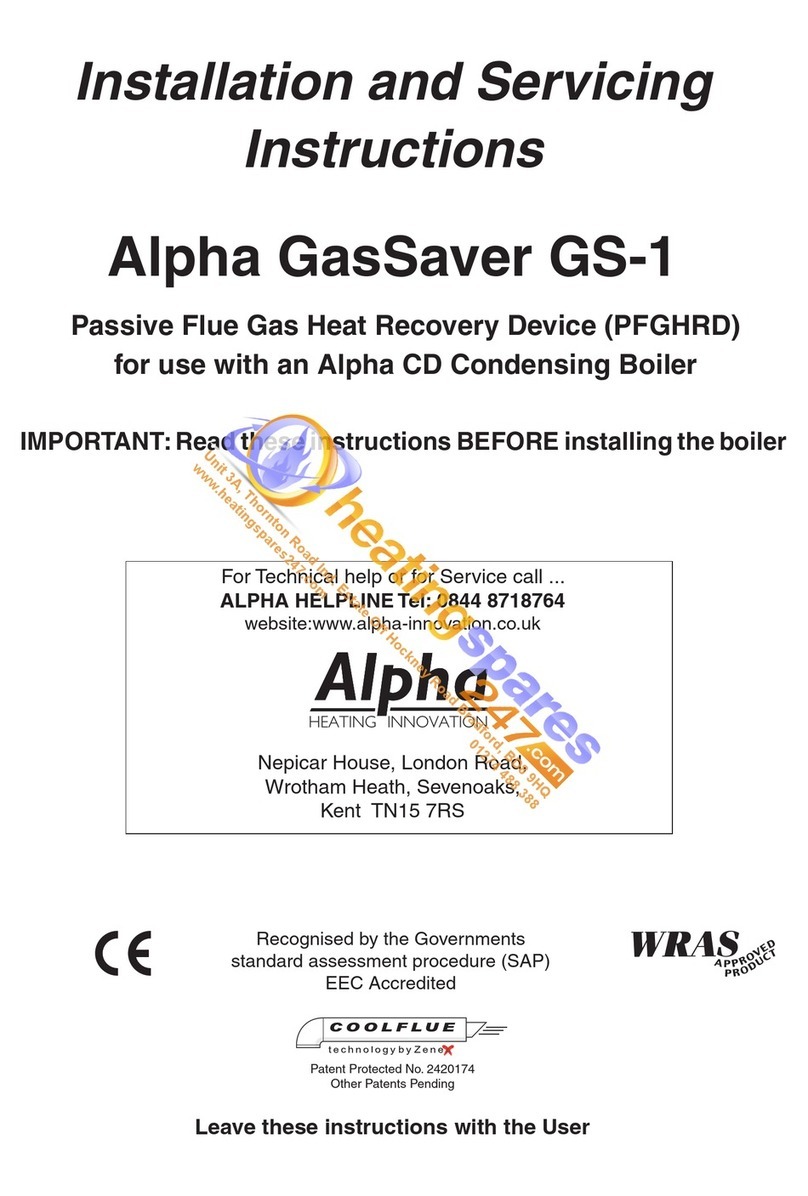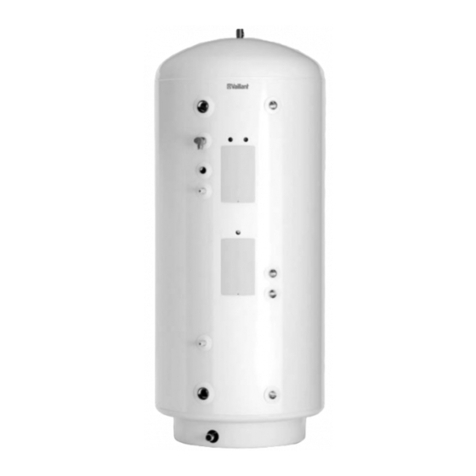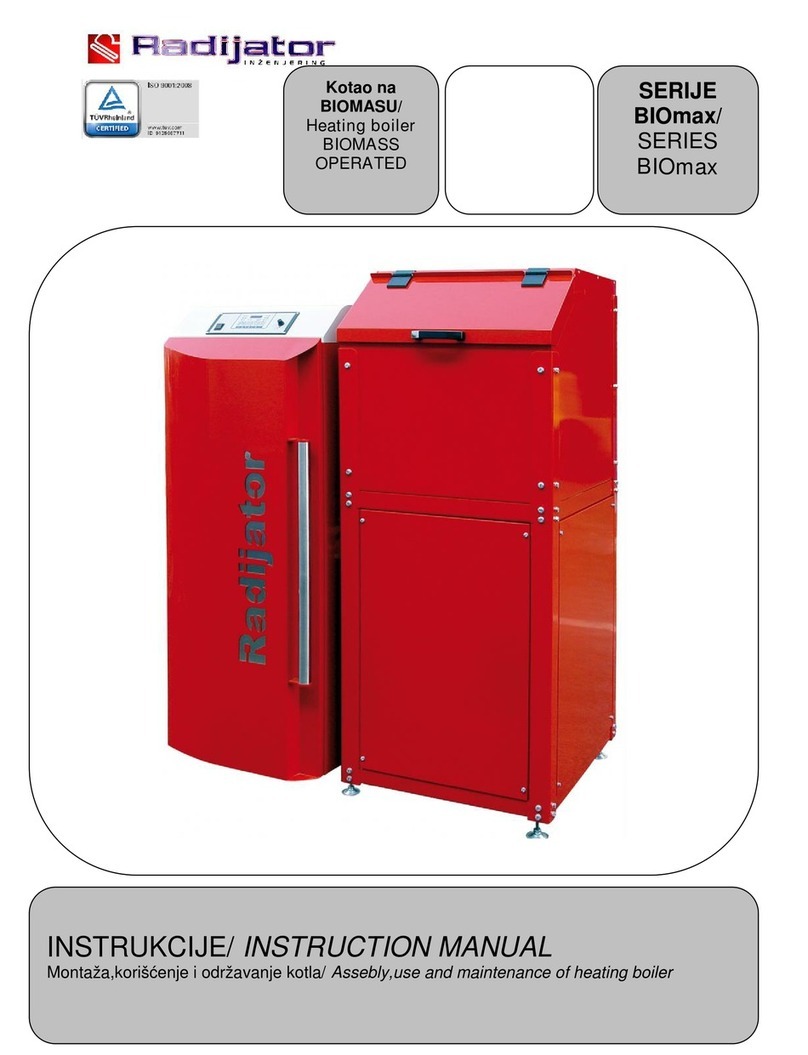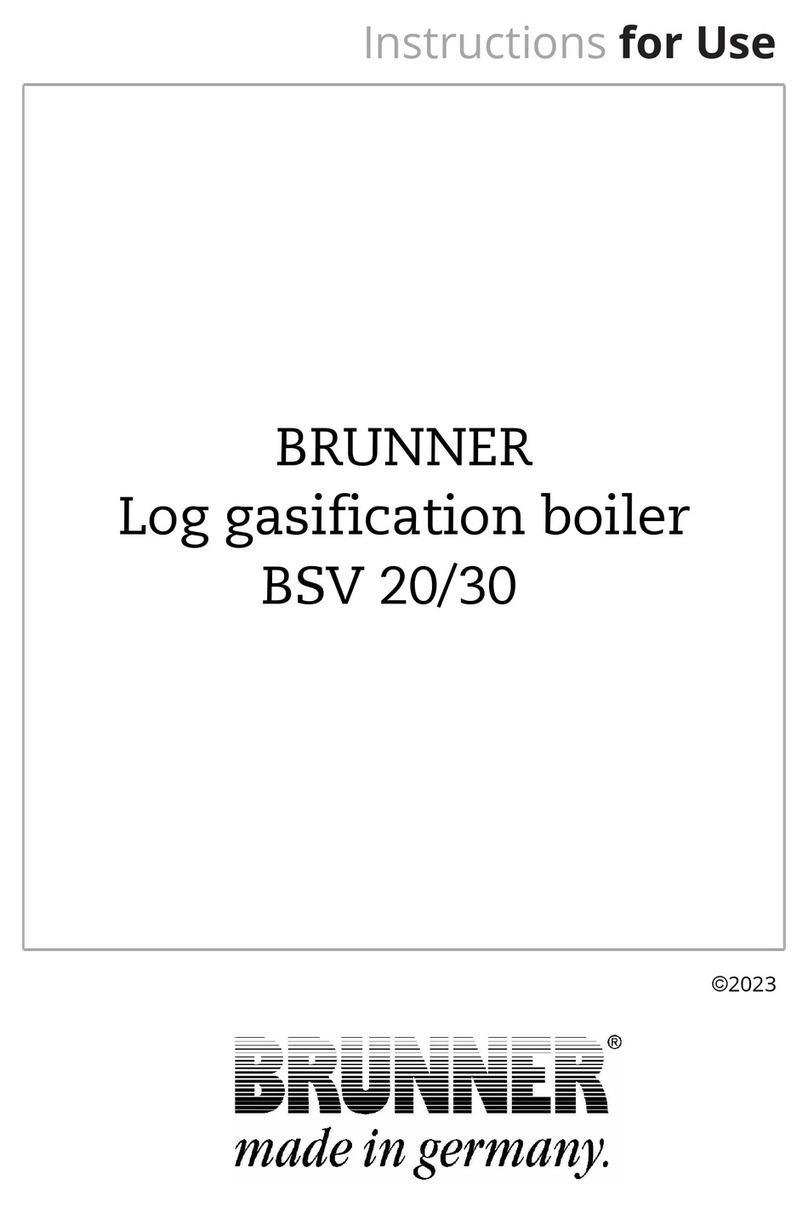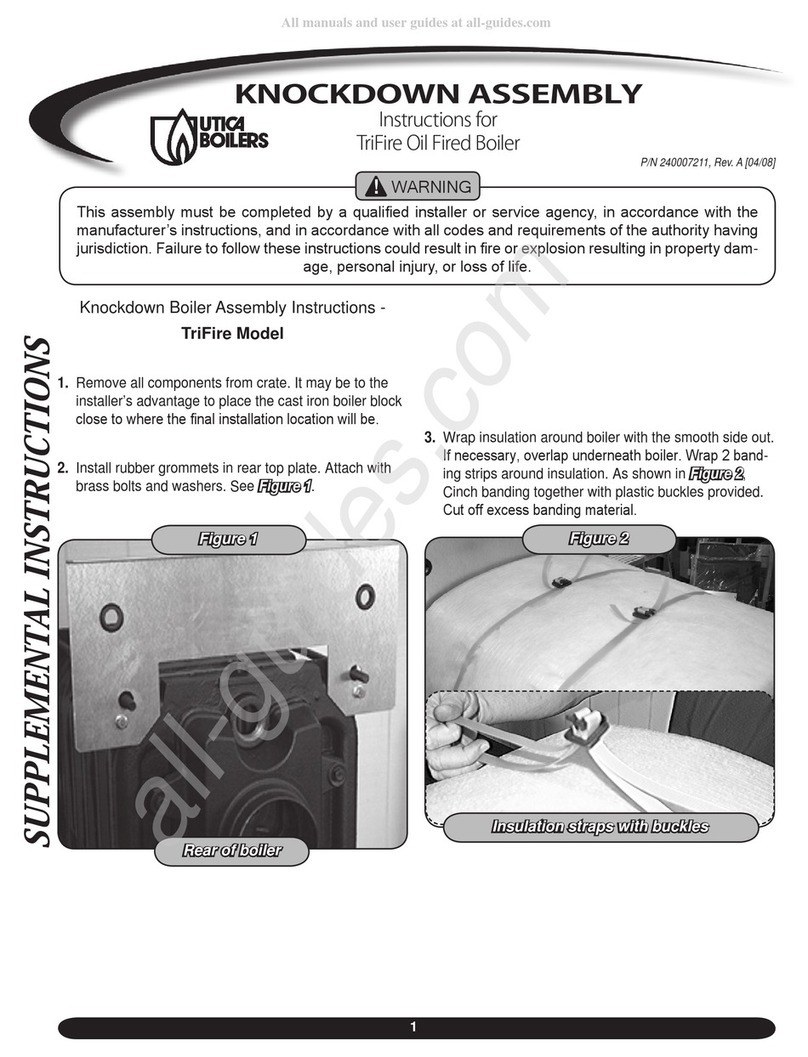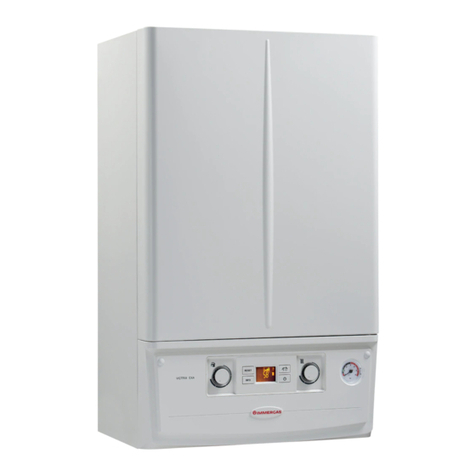
6 - IE
INSTALLATORUSERMAINTENANCE
1.6 VENTILATION OF THE ROOMS.
In the room in which the boiler is installed it is
necessary that at least as much air ows as that
requested for by normal combustion of the gas
and ventilation of the room. Natural air ow must
take place directly through:
- permanent holes in the walls of the room to
ventilate that go towards the outside;
- ventilation pipes, individual or branched type.
e air used for ventilation must be withdrawn
directly from outside, in an area away from
sources of pollution. Natural air flow is also
allowed indirectly by air intake from adjoining
rooms. For further information relative to ven-
tilation of the rooms follow that envisioned in
the regulation.
Evacuation of foul air. In the rooms where
the gas appliances are installed it may also be
necessary, as well as the intake of combustion
agent air, to evacuate foul air, with consequent
intake of a further equal amount of clean air. is
must be realised respecting the provisions of the
technical regulations in force.
1.7 FUME DUCTS.
e gas appliances with attachment for the fumes
discharge pipe must have direct connection to
chimneys or safely ecient ues.
Only if these are missing can the combustion
products be discharged directly to the outside,
as long as the provisions of the regulation are
complied with.
Connection to chimneys or ues. e connec-
tion of the appliances to a chimney or ue takes
place by means of fume ducts.
In the case of connection to pre-existing ues, these
must be perfectly clean as the slag, if present, on de-
tachment from the walls during functioning, could
obstruct the passage of fumes, causing extremely
dangerous situations for the user.
The fume ducts must be connected to the
chimney or ue in the same room in which the
appliance is installed or, at most, in the adjoining
room and must comply with the requisites of
this regulation.
1.8 FLUES/CHIMNEYS.
For the appliances with natural draught indivi-
dual chimneys and branched ues can be used.
Individual chimneys. e internal dimensions
of some types of individual chimneys are con-
tained within the prospects of the regulation. If
the eective system data do not fall within the
conditions of applicability or the table limits, the
size of the chimney must be calculated according
to the regulation.
Branched ues. In buildings with lots of oors,
branched ues can be used for the natural drau-
ght evacuation of combustion products. New
ues must be designed following the calculation
method and provisions of the regulation.
Chimney caps.e cap is a device positioned
crowning an individual chimney or branched
ue. is device eases the dispersion of combu-
stion products, even in adverse weather condi-
tions, and prevents the deposit of foreign bodies
is must satisfy the requisites of the regulation.
e outlet quota, corresponding to the top of the
chimney/ue, independently of any caps, must
be out of the “backow area”, in order to prevent
the formation of counter-pressures that impede
the free discharge of the combustion products
into the atmosphere. It is therefore necessary
to use the minimum heights indicated in the
gures stated in the regulation, depending on
the slope of the roof.
Direct exhaust to the outside.The natural
draught appliances, envisioned to be connected
to a chimney or a ue, can discharge the com-
bustion products directly to the outside, through
a pipe passing through the perimeter walls of
the building.
In this case discharge takes place through an
exhaust ue, which is connected to a draught
terminal at the outside.
Exhaust ue. e exhaust duct must be in com-
pliance with the same requisites listed for the
fume ducts, with further provisions stated in the
regulation in force.
Positioning of the draught terminals. The
draught terminals must:
- be situated on the perimeter walls outside the
building;
- be positioned in a way that the distances
respect the minimum values stated in the
technical regulations in force.
Fume exhaust of forced draught appliances in
closed open-top environments. In spaces closed
on all sides with open tops (ventilation pits,
courtyards etc.), direct fume exhaust is allowed
for natural or forced draught gas appliances with
a heating power range from 4 to 35 kW, provi-
ded the conditions as per the current technical
standards are respected.
Important: it is prohibited to put the fumes
exhaust control device out of order voluntarily.
Every piece of this device must be replaced using
original spare parts if they have deteriorated. In
the case of repeated interventions of the fumes
exhaust control device, check the fumes exhaust
ue and the ventilation of the room in which the
boiler is located.
1.9 SYSTEM FILLING.
Once the boiler is connected, proceed with sy-
stem lling via the lling valve (Fig. 2-2).
Filling is performed at low speed to ensure
release of air bubbles in the water via the boiler
and heating system vents.
e boiler has a built-in automatic venting valve
on the circulator. Check if the cap is loose. Open
the radiator air vent valves.
Close vent valves only when water is delivered.
Close the lling valve when the boiler pressure
gauge indicates approx. 1.2 bar.
N.B.: During these operations, turn on the
circulating pump at intervals by means of the
main selector switch on the control panel. Vent
the circulation pump by loosening the front cap
and keeping the motor running.
Re-tighten the cap aerwards.
1.10 GAS SYSTEM STARTUP.
To start up the system proceed as follows:
- open windows and doors;
- avoid presence of sparks or naked ames;
- bleed all air from pipelines;
- check that the internal system is properly sealed
according to specications.
1.11 STARTUP OF THE BOILER
IGNITION.
For issue of the Declaration of Conformity
provided for by the Law, the following must be
performed for boiler start-up:
- check that the internal system is properly sealed
according to specications
- ensure that the type of gas used corresponds to
boiler settings;
- switch on the boiler and ensure correct ignition;
- make sure that the gas ow rate and relevant
pressure values comply with those given in the
manual (Par. 3-16);
- check the correct ventilation of the rooms;
- check the existing draught during normal
functioning of the appliance, e.g. a draught
gauge positioned at the exit of the appliance
combustion products;
- check that there is no backow of combustion
products into the room, even during functio-
ning of fans;
- ensure that the safety device is engaged in the
event of gas supply failure and check activation
time;
- check activation of the main circuit-breaker
selector upstream from the boiler and on the
unit.
e boiler must not be started up in the event of
failure to comply with any of the above.
N.B.: le boiler preliminary check must be carried
out by a qualied technician. e boiler warranty
is valid as of the date of testing. e test certicate
and warranty is issued to the user.
1.12 DOMESTIC HOT WATER BOILER
DEVICE.
e Avio kW boiler is the accumulation type with
a capacity of 45 litres. It contains a large coiled
stainless steel heat exchanger pipe, which allows
to notably reduce hot water production times.
ese boilers built with stainless steel casing and
bottoms, guarantee long duration.
e assembly concepts and welding (T.I.G.) are
implemented to the minimum detail to ensure
maximum reliability.
e lower inspection ange ensures practical
control of the boiler and the coiled heat exchan-
ger and easy internal cleaning.
e domestic water attachments are found on the
ange cover (cold inlet and hot outlet) and also
the magnesium anode holder cap, including the
latter, supplied as standard for internal protection
of the boiler from possible corrosion.
N.B.: every year a skilled technician (e.g.
Immergas Authorised Aer-sales Service), must
check the eciency of the boiler’s Magnesium
Anode. e boiler is prepared for introduction
of the domestic water re-circulation connection.
